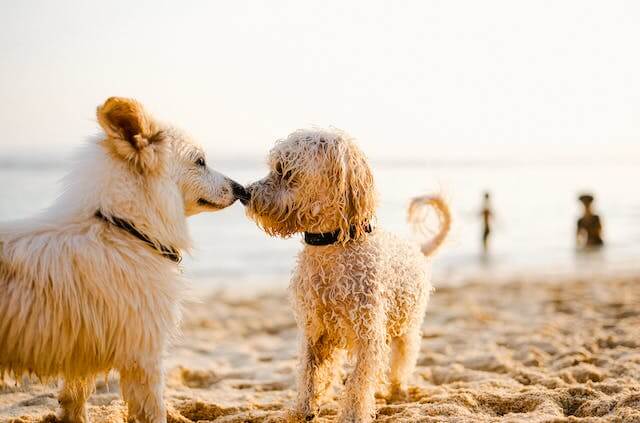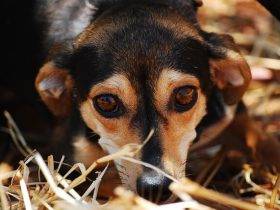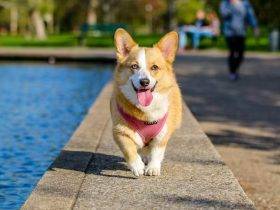Introduction
Dogs come in all shapes and sizes, with a wide variety of coat colors, ear types, facial structures, and other physical traits. One particularly distinctive physical characteristic some dog breeds possess is an elongated nasal structure, resulting in what’s commonly referred to as a “Long-nosed dog.” In this article, we’ll take an in-depth look at dogs with long noses, exploring the history and traits of Long-nosed dogs breeds, as well as health and care considerations for owners of such Long-nosed dogs. By the end, you’ll have a comprehensive understanding of these uniquely snouted pups!
A Brief History of Long-nosed dogs Breeds
Some of the earliest long-nosed dog breeds have histories stretching back centuries. Here’s a brief overview of the origin and development of several prominent long-snouted canine lines:
- Salukis: Often called the ancient dog of Egypt, Salukis have been companions to Middle Eastern nomadic tribes for over 4,000 years. Their lean, leggy builds and long hooked noses made them ideally suited for coursing hares over desert terrain.
- Greyhounds: Dating back to Ancient Egyptian and Mediterranean civilizations, greyhounds were valued for their skill and speed in catching small game and rabbits during hunts. Selective breeding emphasized their sprinter-like physiques and elongated faces.
- Whippets: Originating in 19th century England, whippets were bred as smaller, more agile versions of greyhounds for competing in ratting contests. Their slim frames and moderately long noses excel at darting after prey in confined spaces.
- Afghan Hounds: Considered the national dog of Afghanistan, Afghans have been integral to Central Asian nomadic cultures for millennia. Their silky coats and distinctive loopy tails aid in desert survival, while faces that seem perpetually smiling mask their historic versatility as hunting partners.
- Borzois: Also called Russian wolfhounds, Borzois were prized companions of Russian nobles dating to the 16th century. Evolved to course wolves over the vast steppes, they possess lean builds, impressive stature, and gracefully curved snouts.
Traits of the Long-Nosed Dogs
Beyond their most obvious elongated nasal structure, dogs with long faces tend to share several common physical and behavioral characteristics:
- Sighthounds: Breeds with historic uses for coursing hares, foxes or similar prey almost exclusively have long, narrow snouts. This facilitates their keen vision and ability to swiftly spot motion from a distance.
- Lean, Lithe Physiques: Long-nosed dogs commonly possess slim, lightly-built frames well-suited for running or agility. This complements their natural prey drives and historical purposes as hunters or racers.
- Gracious, Refined Appearance: Many long-faced breeds like Afghans, Borzois and whippets have aesthetically appealing traits like curved muzzles, alert expressions and fluid gaits that make them look noble.
- High Energy, Playful Spirit: Despite their sometimes dignified exteriors, most long-nosed breeds demand ample physical and mental exercise to burn excess energy. Many thrive as friendly companions for interactive games.
- Independence, Instincts: With ancient hunting instincts, they can require some extra patience and socialization. Independence streaks also mean they may not always immediately obey commands.
Health Considerations for Long-Nosed dogs
Like any dogs, long-nosed breeds are not immune to certain health issues. However, overall they tend to be quite robust if provided with a stimulating lifestyle and nutritious diet. Some specific conditions owners should be aware of include:
- Elongated Soft Palate: In sighthounds this anatomical trait can make them prone to reverse sneezing, where air gets trapped during inhalation. Usually harmless but can sound scary.
- Gastric Torsion (Bloat): Bloat, where the stomach twists, is a serious concern for deep-chested breeds but also occurs in thinner-bodied long-snouted breeds after exercise or eating.
- Spinal Problems: Conditions like Intervertebral Disc Disease can potentially impact large, leggy long-nosed breeds like Borzois due to abnormal spinal disk degeneration over time.
- Eye Issues: Proptosis, or popped-out “bug eyes,” may affect some hound breeds. Also be watchful of dry eye, entropion and other problems their sight-focused faces are slightly predisposed to.
With routine preventive care including dental cleanings, heartworm prevention, regular checkups and a balanced lifestyle, most long-nosed dogs live long, healthy lives when properly cared for by dedicated owners. As with any canine companions, early detection of any health changes is key.
Caring for the Long-Nosed Pup breed
Owning a dog with an elongated snout does require some specific considerations to keep both pet and owner happy:
- Grooming Focus: Expect more attention to be paid to the eyes, feet, nails and slender, silky coats of some breeds. Daily brushing helps distribute natural skin oils.
- Appropriate Exercise: Long-nosed breeds need at least one long walk or play session daily along with interactive food toys/puzzles to prevent boredom. Backyard access may be insufficient.
- Snout Sensitivity: Long muzzles can make these breeds more sensitive to extreme heat, cold or pressure. Provide shaded areas in summer, limit time outdoors in sub-zero conditions and don’t tug on their snouts.
- Respecting Prey Drive: While very manageable and friendly, proper training is a must to avoid the temptation for some to chase small pets or wildlife if off leash. Close supervision around cats/bunnies is wise.
- Commitment to Socialization: Early and ongoing socialization helps these sometimes independent-minded hounds be comfortable in a variety of settings. Strategies minimize any shyness or reactivity.
With dedication to meeting each breed’s particular needs, a long-nosed dog’s elongated face is no barrier to being a loyal, enjoyable family pet. The rewards of such devoted companions makes any required extra care well worth it.
Popular Long-Nosed dog Breeds
Within the general category of long-nosed dogs, several specific breeds stand out in terms of worldwide popularity, historic significance and distinctive traits. Let’s take a closer look at a few:
Greyhounds
As one of the original sighthound breeds, Greyhounds hold a special place in the history of dog domestication. Their muscular yet slender frames allow bursts of incredible speed to catch prey, with a top recorded speed of over 45 mph. Greyhounds come in a variety of coat colors and patterns. While their prey drive is strong, proper socialization results in gentle household pets. Regular exercise is a must for these athletic dogs.
Afghan Hounds
With a background extending back to ancient Persian empires, Afghans evoke an air of refinement. Their elegant bearing includes a proudly arched neck topped by a regal, smiling face. Silky coats in various shades flow gracefully, often accented by a long plumed tail. Afghans require daily activity but are also content as dignified couch companions. Their independence merits early training.
Borzois
Also called Russian Wolfhounds, Borzois form an imposing yet elegant presence. Standing up to 32 inches tall, their svelte frames house powerful sighthound muscles. Coat colors range from pale tan to dark gray or brindle patterns. Borzois demand firm, consistent socialization from puppyhood. Once bonded with their people, they display great amiability and affection. Daily jogs or wand-play help keep their minds stimulated.
Salukis
Closely associated with Middle Eastern cultures, Salukis embody a dignified desert heritage. Their supple builds effortlessly glide after gazelles or hares. Silken fur in caramel, cream or any shade of fawn helps dissipate sun’s heat. Despite independence and aloofness with strangers, Salukis often form a devoted bond with their families. Early exposure to people prevents shyness.
Whippets
Smaller cousins to Greyhounds, energetic Whippets possess abundant stamina and agility. Their stocky yet leggy frames allow bursts of speed during play, then a quick transition to couch potato mode. Whippets come in an array of colors and patterns. Socialization ensures these friendly velcro dogs feel at ease in varied settings. Daily activities engage their minds and bodies.
Long-Nose Care Basics
Certain fundamentals help owners properly care for a hound’s extra-long muzzle and keep it healthy:
Hygiene – Wipe facial wrinkles or folds daily to prevent debris buildup. Check ears regularly for infections, pluck fur as needed. Trim toenails every 1-2 months to avoid cracks or tears.
Environment – Provide cool, shaded areas in summer to prevent overheating. Limit time outdoors in extreme hot/cold. Offer calm indoor spaces to help relax sensitive snouts.
Grooming – Daily brushing helps distribute skin oils on silky coats. Check for debris trapped in fur folds. Trim excess hair around eyes that could block vision.
Dental Care – Long-snouted breeds prone to tartar/gum disease. Brush teeth 2-3 times weekly; yearly cleanings under anesthesia recommended.
Health Concerns – Watch closely for reverse sneezing, proptosis signs, spinal injuries. Seek veterinary care promptly for any issues. Early detection aids treatment.
Snout Sensitivity – Never pull on their muzzles as pain/annoyance can lead to nipping. Guide gently by chin. Avoid direct pressing/rubbing noses which may feel invasive.
Socialization Strategies Long-Nosed dogs
Muzzle confidence needs constant reinforcement. Start training sessions near bustling areas while providing distance, treats and praise for calm attentiveness. Progressively move closer over treats. Socialize daily with friendly dogs/people from an early age. Control reactions; remain upbeat and end on a positive note to avoid reinforcing fear/reactivity. Obedience classes aid learning manners in distracting environments. Consider therapy dog certification once mastered to extend training benefits. Stay equipped with high-value rewards like string cheese to distract from triggers. With patient consistency, sensitive snouts learn to feel at ease.
Positive Reinforcement Long-Nosed dogs
Hounds respond best to positive reinforcement training methods that create an enjoyable learning experience. Food rewards paired with praise builds their confidence. Operant conditioning uses treats to encourage good behavior instead of punishing mistakes. Start lessons in short 5-10 minute intervals multiple times daily in distraction-free areas for higher success rates. Once basics are mastered, proof commands through varied locations with rewards. Avoid scolding or physically correcting hounds as they may shut down or react defensively, interfering with the bond of trust. Kind, reward-based training maximizes motivation and cooperation between owners and their elegant companions.
Choosing the Right Long-Nosed dog Breed
Before selecting your hound, objectively weigh your lifestyle realities against each type’s specific needs. Do thorough research on:
- Energy Levels (high-strung vs couch potatoes)
- Coat/Grooming Needs
- Training Difficulty/Innate Behaviors
- Living Space/Fencing Requirements
- Costs (medical, equipment, supplies)
- Time Commitment for Daily Activities/Socialization
Speak to multiple long-nosed breed rescues plus current owners of the breeds interesting you. Shelters often have adult hounds suitable as family pets too. With realistic expectations and a commitment to meeting their needs, any of these breeds can thrive as devoted, fun-loving companions. Just be sure your own lifestyle matches the requirements for your future four-legged friend’s long nose!
Conclusion
From elegant Salukis coursing sands to stately Borzois galloping through forests, dogs that happen to possess an elongated nasal structure have fulfilled many roles beside human cultures for millennia. While not always the easiest pets due to prey instincts and sometimes aloof temperaments, long-nosed breeds with proper socialization provide dedicated owners with wonderful companionship. By understanding each type’s traits, history and health needs, their unique long snouts no longer seem so odd, but instead take on an air of refined beauty and function. With commitment to daily interaction and mental/physical activities, dogs with long faces live happily as treasured family members.






Leave a Reply